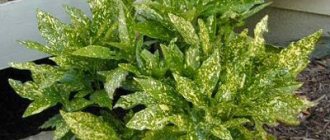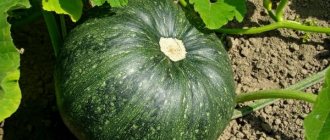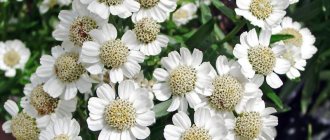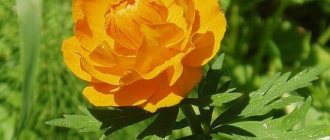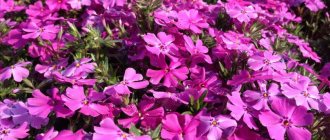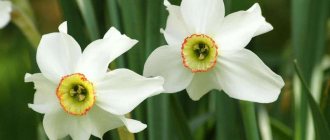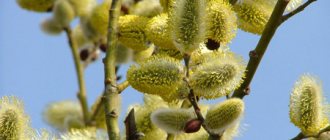Japanese azalea is a bright exotic plant, striking with its extraordinary beauty and colors, and is considered to be an indoor flower. Few people know that Japanese azalea, if the rules for planting and care are followed, can decorate any garden plot. The ornamental shrub belongs to the heather family, a group of flowering rhododendrons. Most varieties do not shed their leaves, remaining evergreen.
Initially, the crop was grown and cultivated in Japan, becoming a real symbol of the land of the rising sun. The bushes are flexible and lend themselves well to pruning. Thanks to this quality, it is used as a bonsai, to create flower arrangements or individual plantings in landscape design. Very slow growth rates are noted; in open ground the bushes do not exceed 1.5 meters in height.
Description: varieties and varieties of Japanese azaleas
The Japanese azalea is an evergreen shrub, which in its beauty can easily compete with the recognized queen of flowers - the rose.
Photos with the works of landscape designers from Japan demonstrate: in its homeland, this crop is used not only to decorate flower beds, but also as a hedge, reaching a height of 2-3 m. However, in Central Russia, garden azalea will not exceed the 0 mark. 5 m – climate affects. The Japanese beauty blooms profusely, but not for long. If you select varieties with different flowering phases, in total you will be able to admire the beauty of the azalea for up to 1.5-2 months. Different types of crops differ in the size of the flowers and their shades, for example:
- variety Marushka – red;
Variety Marushka
- Petticoat – pink;
Variety Petticoat
- Ledikanense – purple;
Variety Ledikanense
- Schneeperle – white.
Variety Schneeperle
Gardening tips
Evgenia: “Do not wash the roots when transplanting, be sure to trim the earthen ball. Using scissors, remove 1-2 cm of roots from the bottom and top. The lump should become round, white roots should be visible. This will allow the system to better absorb water and nutrients.”
Galina: “Watch the acidity of the soil. The norm for Japanese azalea is 3.5-5 pH. As a preventive measure against pests, use fertilizing with the addition of acid mixtures, peat, fungicides, and insecticides.”
5 / 5 ( 1 voice )
Planting a plant in open ground
You need to start planting in the spring, when the snow melts. The area must be wind-free, bright, but not exposed to direct sunlight. Partial shade or diffused lighting is best. The soil is fertile, well loosened. Buy a mixture for azaleas or make it yourself by mixing soil from under conifers with peat, sand, and compost. The roots of the plant lie about 0.5 m, so only the top layer of soil can be replaced.
Advice. Make drainage for your azalea using broken bricks or gravel.
The width of each hole is 0.7-1 m, depth - 0.5 m. The thickness of the drainage layer in this case should be 15-20 cm. After rooting, the seedling is watered and mulched abundantly. To do this, take a mixture of peat and pine needles. You can take moss and bark. By adding mulch, the root collar of the plant is left on the surface.
Rules for planting garden azaleas
Plant the crop in early spring, when active sap movement has begun. Before planting, place the bush in a container with settled warm water. If you didn’t have time at the beginning of the growing season, reschedule the work until September. At the beginning of autumn there are warm days, the azalea will have time to adapt and successfully overwinter.
Selecting a location:
- shaded, under the canopy of trees, in the northern part of the garden - the plant does not like direct sunlight, but avoid dense shade;
- the site must be protected from wind and drafts; zones between buildings, corner of the house - a bad choice;
- allocate 1 sq.m of area for each bush;
- take into account the level of groundwater; moisture should not accumulate, otherwise the roots will rot.
Organize a planting hole 50 cm deep, 70-80 cm wide. The superficial type of root system does not require deep penetration into the ground.
Preparation:
- Lay a strong drainage layer on the bottom - a layer of sand, large expanded clay, crushed red brick. Height – 10-15 cm. Do not take limestone chips, it changes the acidity of the soil, which is harmful and detrimental to the bush.
- Free the removed lump from the turf. Take 3 parts of soil, add 1 part of pine litter, 2 parts of acidic peat (need to be cleared of coarse inclusions). Structure the substrate with 2 parts of sand.
- Place a mound of prepared soil on the drainage layer and place the bush, carefully straightening the roots. Make sure that the root collar remains 3-4 cm above ground level.
- Fill the hole, compact it, and moisten the soil. If it settles, add substrate.
- Carry out abundant mulching with a layer of 5-7 cm.
Important! When planting 2 or more bushes, keep a distance between them. For tall people – 1.6-2 m, for short people – 0.5-0.7 m.
Caring for a Japanese beauty
- Watering is plentiful, especially during the flowering phase. You need to monitor the top layer of soil and moisten the entire area near the azalea in the morning or evening. Water is only settled. In August, watering is stopped.
- Spraying - all the time, excluding the flowering period.
- Removing dried inflorescences and dry branches is one of the main conditions of care. Stimulates the appearance of new buds and shoots.
- Pruning – begins 2 weeks after the azalea has fully bloomed. Branches throughout the plant are shortened by about 1/3. The bush is formed based on the rule: the more you prune in the fall, the more it will grow in the spring.
The azalea bush needs pruning and covering for the winter.
- Shelter for the winter. Without this, complete care is impossible, because the roots of the azalea can die from the winter sun. At the end of autumn, the soil is filled with water, coniferous branches, peat, and straw are placed on top. The branches of the bush are bent to the ground, fixed with a wire frame and covered with material that allows air to pass through.
Advice. When growing azaleas in open ground, regularly acidify the soil near the flower.
Fertilizer and feeding of azaleas
In spring, young plants need to be fertilized with a solution of cow manure. At the same time, adult bushes should be fed with complex preparations. After flowering, the azalea is fertilized with phosphorus-potassium compounds (proportion – 1:2). All this should be applied not at the root, but at a short distance from it - about 0.2 m.
Some types of fertilizing are good not only as a basis for care, but also as prevention:
- nitrogen helps the plant develop “immunity” and cope with diseases and pests;
- Copper-containing fertilizers in the initial phase of the growing season reduce the likelihood of fungal infection.
Attention! Azalea does not tolerate fertilizers with lime and chlorine, as well as ash.
Plant propagation. The most popular way
When growing garden azaleas in open ground, the seed propagation method is rarely used, because in this case you have to wait a long time for the result. A faster, and therefore more popular, method is cuttings. Shoots up to 10 cm long are cut from the tops of the mother plant. Do this at an angle of 45. Each cutting should have 2-3 healthy leaves.
Attention! The apical bud and underdeveloped leaves on the shoot should be removed.
For effective propagation and acceleration of root formation, the lower cut of the shoot is treated with a growth stimulator. The cuttings are placed in peat or disposable cups with peat, in which a hole is made for draining. The cut should be at a depth of 2-3 cm. Next is watering and covering the containers with film (it should not touch the shoots).
The most convenient way to propagate azaleas is from cuttings.
Care for shoots should include:
- maintaining the temperature around +22 C;
- regular ventilation (you need to start a week after planting);
- sufficient moistening of the peat.
With this method of propagation, cuttings take root in 1.5-2 months. After this, they can be planted in open ground.
Diseases and pests of azaleas
Among the insects on this garden crop you can find:
- aphids;
- scale insect;
- ticks – red, spider, rhododendron;
- mealybug.
To combat them you need to choose the right insecticide. Azalea can also be overcome by fungal diseases:
- late blight;
- sooty fungus;
- fusarium wilt;
- chlorosis.
In many cases, fungicides will help, but if the fungi multiply heavily, it is unlikely that it will be possible to save the flower.
Azalea is quite resistant to pests and diseases
In general, garden azalea varieties are considered disease and insect resistant. However, the plant may suffer due to improper care:
- The absence of flowering indicates that the planting site has been selected incorrectly. A transplant will help.
- Drying out is the result of insufficient watering. Combined with an unlucky growing location where there is too much sunlight, this can lead to the death of the flower. When an azalea wilts, water it with water with vinegar or citric acid.
- Falling leaves in Japanese varieties is a signal of unsuitable soil. There may be too much lime in the soil. Replant the flower.
Attention! Do not confuse Japanese azalea with deciduous azalea, for which shedding leaves is a natural process.
History of origin
Japanese azalea is a relatively young flower; the history of its breeding and distribution began at the beginning of the 20th century. Then this species was called Kurum azaleas. But due to the peculiarities of care and intolerance to low temperatures, azalea did not take root in the gardens of Europe and America. But thanks to the efforts of breeders, after some time, azalea hybrids appeared that perfectly adapt to our conditions (you can read about hybrid rhododendrons here). In Japan, the garden azalea has become a symbol and a necessary design element.
Combination with other plants in landscape design
Azalea is good for both single and group plantings in open ground. If you like the second option, decorate the area by planting several specimens at a distance of 2x2 m (maximum 10 pieces). A good background for Japanese varieties is coniferous trees. Judging by the photo, a wonderful composition is obtained in an ensemble with perennials that have beautiful decorative leaves: funkia, ferns, Rogers. If they bloom at the same time as azaleas, choose those that have white flowers.
The fragile culture looks beautiful in combination with heather and other varieties of rhododendrons. They have the same preferences when it comes to soil composition. Remember that azalea is a low flower. Therefore, do not plant bright, tall plants nearby in order to fully enjoy the short flowering of the Japanese beauty.
Most popular varieties
- Among garden rhododendrons, Japanese species are especially popular. A type of azalea called “marushka” is very popular among flower growers. This plant is a low bush that blooms in late spring with red flowers. Planting and care are no different from caring for similar plants.
- The Canzonetta variety is a spherical bush of approximately the same height as the previous variety. Semi-double flowers have a carmine-pink hue.
- The beautiful Peticout is also similar to the previous varieties. This Japanese azalea blooms in May, but its flowers are pink. Bushes of this type of heather grow up to 50 centimeters and like very abundant watering.
- The Japanese variety "Maisshnii" is distinguished by the size of its flowers. The diameter of the corollas is about 6-8 centimeters. Compared to other plants, “Maisshnii” look quite impressive. And the orange flowers of the Geisha Orange variety literally blaze with orange hues.
All types of azaleas are not exactly considered rhododendrons; they combine well with each other. Planting and caring for these plants is not particularly different. In the Japanese natural landscape, many compositional designs of ridges, flower beds and hedges are associated with azaleas.

